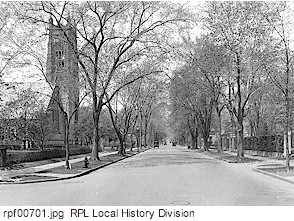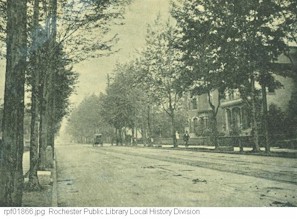

East Side, West Side: The Development of East and West Avenues in Rochester
 |
 |
Left, a view of East Avenue; right, a view of West Avenue
In the early 21st century, most Rochesterians still refer to themselves as East or West Siders. This practice began long ago, due to the most obvious natural boundary in the area, the Genesee River, which neatly bisects the heart of the city from Lake Ontario (in the north) into the rest of Monroe County (to the south) and beyond. Downtown began at the river, near the waterfalls and the first Main Street Bridge. As the booming Victorian city grew outwards, two areas which developed in vastly different ways were East Avenue and West Avenue. This tour takes you back to the world of approximately 1860 to 1920 to explore the development of these neighborhoods, their most famous residents, and their architectural heritage. In addition, we'll explore their status today, including the challenges they face and their achievements.
West Avenue: The
Working Class World of Susan B. Anthony
East Avenue: Mansions, Magnates and Museums
Resources Used for East Side, West Side
Credits
This pathfinder was funded by a grant from the Library Services and Technology Act and published by the Central Library of Rochester and Monroe County, copyright 2003.
Authors: Kathryn Heckle, Colleen McBride and Elizabeth P. Spring
|
Send comments to Webmaster |